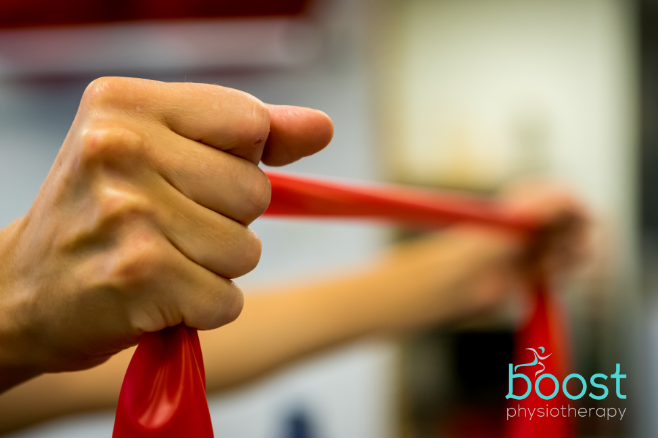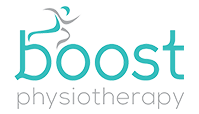
Physiotherapy Exercises for Shoulder – Key Points to Know in 2022
Physiotherapy exercises for shoulder pain can get someone’s movement back on track. Whether your ailments are due to injury, surgery or chronic pain, physio exercises and a regular routine can significantly improve your mobility. The shoulder and rotator cuff are two of the most common areas requiring a conditioning program because of overuse or accidents. Thankfully, there are plenty of physiotherapy exercises to treat your shoulder mobility and strengthen the inner muscles.
In general, physiotherapy exercises can help get your shoulder movement back on track. However, we recommend that for any new exercise or conditioning regimen, seek an expert’s advice so they can evaluate your individual movement and tailor the exercises to your needs. A physiotherapist can help outline the best plan moving forward.
Shoulder Physiotherapy Edmonton
Strengthing Purpose
Strengthing the muscles that help your shoulder will assist with keeping your shoulder stable. Keeping the muscles strong can soothe shoulder torment and prevent further injury. However, strengthening exercises have a wide range of purposes and should be avoided right after an injury.
Physiotherapists tend to slowly introduce clients to shoulder strengthening exercises while they’re in the middle of rehabbing their shoulder. Getting too far ahead with strengthening can end up doing more harm than good, furthering damage and delaying the healing process.
Flexibility Purpose
Flexing and extending the muscles you strengthen is significant for reestablishing your scope of movement and preventing injury. Delicately flexing before strengthening exercises can assist with eliminating muscle irritation and keeping your muscles long and flexible.
We recommend stretching at least five to ten minutes before any strengthening exercise. Some people stretch significantly longer, and it’s never recommended not to stretch. Not stretching can lead to a higher chance of injury, cramps, and much more.
Muscles to Target
The shoulder has about 20 muscles supporting it, allowing it to turn and rotate in many directions. As great as general stretching and strengthening can be, knowing what muscle groups to target is critical. A physiotherapist can outline the specific exercises you can do to target the muscles in your shoulder that need work.
Shoulder muscle anatomy:
- Deltoids (large triangle muscle covers front side and back)
- Trapezius muscles (upper back)
- Rhomboid muscles (upper back)
- Teres muscles (supporting the shoulder joint)
- Supraspinatus (supporting the shoulder joint)
- Infraspinatus (supporting the shoulder joint)
- Subscapularis (front of shoulder)
- Biceps (front of the upper arm)
- Triceps (back of upper arm)
Getting Started
Many people, unfortunately, dive headfirst into their exercise regimen without warming up and stretching beforehand. Exercises of any kind have a specific recommended set of tips before beginning them.
Warm-Up – A decent warm-up should last five to ten minutes and work for all significant muscle groups. For best outcomes, start gradually and work your way up. Some warm-up schedules center around cardio and scope of movement exercises, like jumping jacks.
Stretching – After the warm-up, do at least five to ten minutes of stretching before moving ahead. At the point when you have completed the strengthening activities, repeat stretching to end the session.
Don’t Ignore Pain – You shouldn’t feel pain while exercising. Talk to your primary care physician or physiotherapist on the off chance that you have any aggravation while working out.
Ask Questions to Physiotherapists – If you’re confused about your shoulder or any other physical area, don’t be afraid to ask questions. Physiotherapists are there to guide you through the healing process for your body.
Top Physiotherapy Exercises for Shoulder
1. Internal Rotation
Make a 3-foot-long circle with a flexible band and tie the finishes together. Fix the loop to a door handle or other stable item. Stand holding the band with your elbow bent and next to you. Keep your elbow near your side and bring your arm across your body. Gradually return to the beginning position and repeat.
2. External Rotation With Arm Abducted 90°
Make a 3-foot-long circle with a flexible band and tie the finishes together. Join the circle to a door handle or other stable object. Stand holding the band with your elbow twisted 90° and raised. Keeping your shoulder and elbow level, gradually lift your hand until it’s following your head. Gradually return to the beginning position and repeat.
3. Standing Row
Make a 3-foot-long circle with the flexible band and tie the closures together. Join the circle to a door handle or other stable item. Stand holding the band with your elbow twisted and next to you. Keep your arm near your side and gradually pull your elbow straight back. Gradually return to the beginning position and repeat
4. Sleeper Stretch
Lie on your side on a firm, level surface with the affected shoulder under you and your arm bowed. Utilize your unaffected arm to push your other arm down. Quit pushing down when you feel a stretch toward the rear of your affected shoulder. Stand firm on this position for 30 seconds, then, at that point, loosen up your arm for 30 seconds.
5. Passive External Rotation
Handle a stick with one hand and cup the opposite end of the stick with the other hand. Keep the elbow of the shoulder you are extending against the side of your body and push the stick on a level plane and feel a pull without pain. Hold for 30 seconds, and afterward unwind for 30 seconds. Repeat on the opposite side.
6. Passive Internal Rotation
Hold a stick with one hand, and gently handle the opposite end of the stick with your other hand. Pull the stick evenly so your shoulder is latently extended to the point of feeling a pull without pain. Hold for 30 seconds, and afterward unwind for 30 seconds. Repeat on the opposite side.
7. Crossover Arm Stretch
Loosen up your shoulders and tenderly draw one arm across your chest considerably far, holding at your upper arm. Hold the stretch for 30 seconds, and afterward unwind for 30 seconds. Repeat with the other arm.
8. Pendulum
Lean forward and place one hand on a counter or table for help. Allow your other arm to hang next to you. Tenderly swing your arm forward and back. Repeat the activity, moving your arm side-to-side, and rehash in a roundabout movement. Repeat the whole grouping with the other arm.
BY: boostptepadmin
Physio
COMMENTS: No Comments
